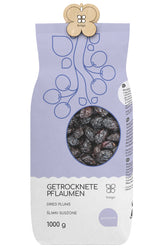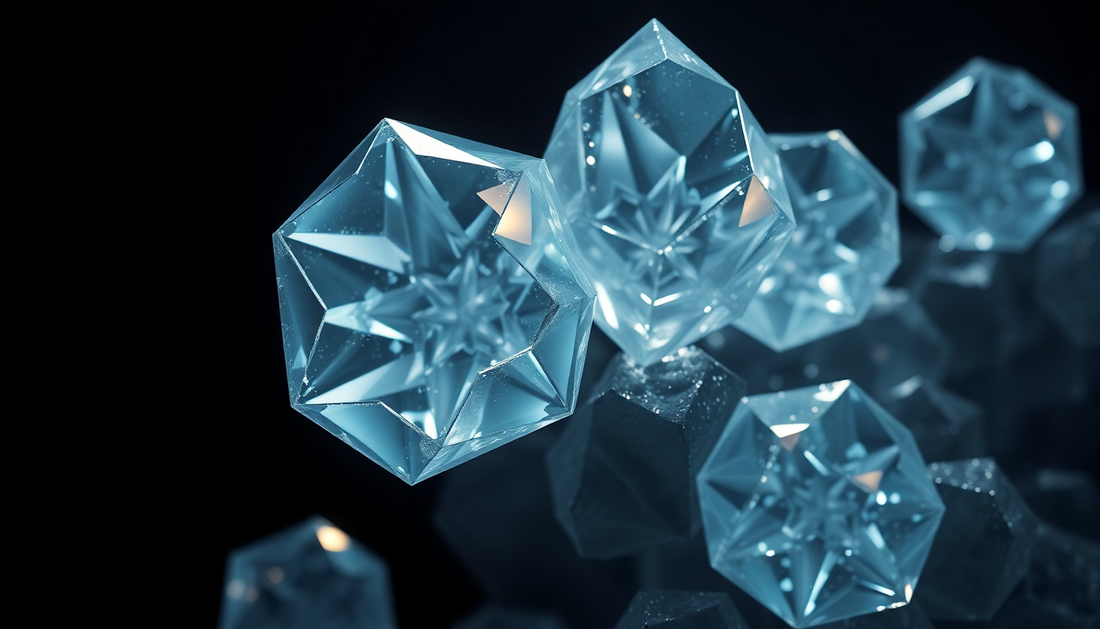Crystallization – a fascinating process that allows us to look deep into the secrets of nature. Behind this seemingly simple process lies a world full of complexity and elegance that never ceases to amaze us. In this treatise, we want to embark on a journey of discovery and explore the beauty of crystallization.
The structure of crystals
Crystals are fascinating structures consisting of a highly ordered arrangement of atoms, molecules, or ions. This arrangement follows a precise geometric pattern that is reflected in the characteristic form and symmetry of the crystals. Each crystal type has a unique crystal structure determined by the way the building blocks are assembled.
Consider, for example, the diamond. This precious gemstone consists of carbon atoms arranged in a cubic crystal lattice. This lattice gives the diamond its unparalleled hardness and brilliance. Other crystals, such as salt or quartz, also have characteristic structures that determine their special properties.
The formation of crystals
Crystals form when atoms, molecules, or ions transition from a solution, melt, or gas phase into a solid, highly ordered state. This process is called crystallization and is a fundamental process in nature and industry.
The key to crystallization lies in supersaturation. When a solution or melt contains more dissolved substances than it can hold at a certain temperature, the excess particles begin to aggregate into crystal nuclei. These nuclei then grow into larger crystals through further particle attachment.
The speed and conditions of crystal growth determine the final crystal form. Slow growth favors the formation of large, well-formed crystals, while rapid growth can lead to smaller, more irregular shapes.
The diversity of crystals
Nature offers us an incredible diversity of crystals that differ in form, color, and structure. From hexagonal snow crystals to cubic salt crystals – each crystal type has its own unique beauty.
Colored crystals
Many crystals are unique not only in their form but also in their color. This coloration arises through various mechanisms:
- Impurities: Traces of foreign atoms or molecules can influence the crystal structure and thus produce characteristic colors. For instance, the emerald owes its green coloration to chromium impurities.
- Crystal defects: Vacancies or dislocations in the crystal structure can cause light absorption and scattering, leading to color effects. Amethysts, for example, owe their violet color to such defects.
- Electronic Transitions: In some crystals, electrons can switch between different energy levels, emitting light of specific wavelengths. This produces characteristic colors, as in rubies.
The diversity of colors and forms makes crystals true works of art in nature.
Crystals in Technology
In addition to their aesthetic fascination, crystals also have enormous technological significance. Many modern devices and materials are based on the special properties of crystals:
- Electronics: Silicon crystals are the heart of modern computer chips and semiconductor devices.
- Optics: Crystals such as quartz or calcite are used in lenses, prisms, and lasers.
- Sensor Technology: Piezoelectric crystals convert mechanical energy into electrical energy and are used in sensors and actuators.
- Materials Science: Crystalline structures give many materials their special mechanical, thermal, or electrical properties.
Thus, the exploration and utilization of crystal structure is a key to technological innovations.
The Beauty of Crystallization
Crystals fascinate us not only through their diversity and functionality but also through their aesthetic grace. The process of crystallization itself is a true wonder of nature.
When we observe crystals, we see the order and symmetry inherent in matter. Each crystal form is the result of a precise interplay of forces at the atomic level. It is this elegance of structure that continually amazes us.
Moreover, crystals also reveal the beauty of chemical processes. Crystallization itself is a fascinating process in which atoms and molecules come together to form complex structures. This interplay of forces, movements, and energy transformations is a masterpiece of nature.
Ultimately, crystals are witnesses to the complexity and beauty hidden within the structure of matter. They remind us that the world around us is full of wonders waiting to be discovered and understood. By exploring crystallization, we can gain deeper insight into the secrets of nature.
Conclusion
Crystals are fascinating formations that never cease to amaze us. From their unique structure to their diverse array of colors, they reveal to us the beauty of science. By studying crystallization, we can not only unlock new technological possibilities but also admire the elegance and complexity of matter itself.
Whether as jewelry, materials, or research objects – crystals will continue to captivate us anew in the future. So let us continue to explore the wonders of crystallization and discover the beauty of the structure of matter.































































































































